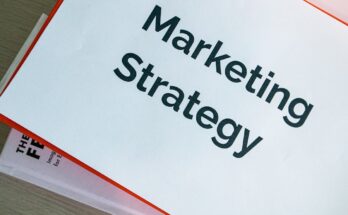Hey there! Ever feel like you’re putting stuff out there for your business, maybe on social media or your website, and it feels a bit random? Like some people notice, a few click around, but getting them to actually *buy* feels like pure chance? You’re not alone. A lot of folks running businesses, whether big or small, struggle with getting customers consistently. They know they need people to find them and eventually become paying customers, but the path from “just looking” to “Yep, I’ll take it!” isn’t clear. This article is gonna clear that up for you. We’re gonna talk about building something called a sales funnel – basically, a step-by-step system designed to guide someone from hearing about you for the first time to happily buying from you. By the time you’re done reading, you’ll have a solid game plan to make getting customers way more predictable and less like crossing your fingers and hoping for the best. It’s about making the whole process work smarter, not harder, so your business can really take off.
What’s a Sales Funnel, Anyway?
Okay, picture this: You know how when you pour something into a funnel, it starts wide at the top and gets narrower towards the bottom? That’s basically what a sales funnel is, but for your customers. At the wide top, you’ve got everyone who might possibly be interested in what you offer – maybe they saw your ad online, stumbled onto your website, or heard about you from a friend. As they move down the funnel, fewer people continue, but the ones who do are getting more and more interested and closer to making a purchase. The narrow bottom is where the magic happens – that’s where people actually become paying customers. It’s a way of thinking about the journey someone takes with your business, from being a total stranger to becoming a loyal fan.
Knowing Your Dream Customer Inside and Out
You can’t guide someone through a journey if you don’t know who they are or where they’re trying to go, right? Building a great funnel starts here. You gotta get super clear on who your absolute ideal customer is. What are their hopes? Their frustrations? What problems are they trying to solve that *you* can help with? Think about their age, where they hang out online, what they like to do for fun, even what keeps them up at night. The more you understand them, the better you can tailor everything in your funnel – the messages, the offers, the whole vibe – to speak directly to them. It’s kinda like knowing your friend loves pizza before you invite them to dinner; you know exactly what kind of restaurant to pick to make them happy.
Grabbing Their Attention: The Top of the Funnel
This is the widest part, the awareness stage. Your goal here is simple: get noticed by those dream customers we just talked about. This isn’t about selling yet; it’s about showing up where they are and giving them something valuable or interesting enough to make them pause. This could be a cool blog post that answers a question they have, a helpful video on social media, a funny meme that relates to their life, or maybe they just searched on Google and found your website because it had the info they needed. The idea is to make a good first impression and let them know you exist and that you might have something they’ll care about down the line. Think of it like meeting someone new – you don’t ask them to be your best friend right away; you just introduce yourself and find something cool to talk about.
Building Connection: Moving to Interest
Okay, so they know you exist. Now what? This next stage is about moving them from just knowing about you to actually being interested. You do this by giving them *more* value in exchange for a little more information about themselves, usually their email address. This is where things like free guides, checklists, webinars, or exclusive content come in. You’re offering them something genuinely helpful or interesting related to the problem you solve or the things they care about. Getting their email means you now have a way to talk to them directly and nurture that connection over time. It’s like exchanging phone numbers after a good first meeting – you’ve got a way to keep the conversation going.
Nurturing and Building Trust: The Consideration Phase
Once you have a way to communicate directly, like through email, you enter the consideration phase. This is where you continue providing value, sharing useful tips, telling stories (maybe even a little anecdote about how someone else solved a similar problem with your help – remember, these are just illustrative examples, not real testimonials unless you have them!), and showing them *why* you’re the right choice when they’re ready to buy. You’re not hitting them over the head with sales pitches every day. Instead, you’re building trust, positioning yourself as an expert, and helping them understand the benefits of what you offer. You’re guiding them, answering potential questions before they even ask, and making them feel comfortable and confident in you. This is like those follow-up chats after getting someone’s number – you’re building the relationship, sharing more about yourself, and seeing if you’re a good fit.
Making the Decision Easy: The Offer
Now they’re interested, they trust you, and they understand how you can help. This is the decision stage, where you present your core offer. This needs to be clear, compelling, and easy to understand. What exactly are you selling? How will it solve their problem? What makes it special? This is where you spell out the details – price, features, benefits. You might also include things that make saying “yes” feel even better, like a guarantee, a special bonus, or social proof like customer reviews (again, use real ones if you have them; fictional ones are just for illustration here!). You want to remove as many roadblocks as possible and make it a no-brainer for them to take the next step. It’s like finally inviting that person you’ve been talking to on a date – you make the plan clear and exciting!
Turning Interest into Action: The Conversion
This is the narrowest part of the funnel, the action stage. They’ve seen your offer, and now you need to make it super easy for them to buy. This means having a clear call to action – telling them exactly what to do next (“Buy Now,” “Sign Up,” “Get Started”). Your website or landing page where they complete the purchase needs to load fast, look good on any device, and have a simple checkout process. No confusing steps, no hidden fees. Any friction here can make people abandon ship at the last minute. Think about buying something online yourself – if the website is slow or confusing, you’re probably just gonna leave, right? Make it smooth sailing for them.
Keeping Them Happy: Beyond the Purchase
Guess what? The funnel doesn’t totally end after they buy! The best businesses focus on what happens *after* the sale. This means delivering on your promise, providing great customer support, and continuing to build that relationship. Happy customers are more likely to buy from you again, tell their friends about you (which brings more people into the top of your funnel!), and become advocates for your brand. This could involve follow-up emails with tips on using what they bought, asking for feedback, or offering them exclusive deals for being a repeat customer. It’s like staying friends with someone after the first date went well – you keep in touch and build a lasting connection.
Watching the Numbers and Making it Better
Building the funnel is awesome, but you’re not done! A key part of having an *effective* funnel is watching how people move through it. Where are they getting stuck? Are lots of people visiting your website but not signing up for your email list? Are people signing up but not opening your emails? Are they adding things to their cart but not buying? By tracking these things, you can figure out which parts of your funnel aren’t working as well as they could be and make changes. Maybe you need a clearer message at the top, maybe your email sequence needs better stories, or maybe your checkout page is confusing. Testing different things and seeing what works better is how you make your funnel stronger and more efficient over time. It’s like tuning up an engine – you check all the parts to make sure they’re running smoothly and getting you where you need to go.
Wrapping it all up, building an effective sales funnel is really about creating a clear, guided path for potential customers to follow. It starts with understanding who you’re trying to reach and then setting up a series of steps designed to grab their attention, build trust, showcase your solution, and make it easy for them to buy. We walked through how to attract people at the top, nurture their interest and build connection, present your offer compellingly, and make the final purchase step simple. Remember, it’s not a one-and-done deal; you need to keep an eye on how people are moving through your funnel and tweak things to make it better. By focusing on helping your ideal customer at each stage, you create a system that can consistently bring in new business, taking the guesswork out of getting customers and setting your business up for steadier growth.




